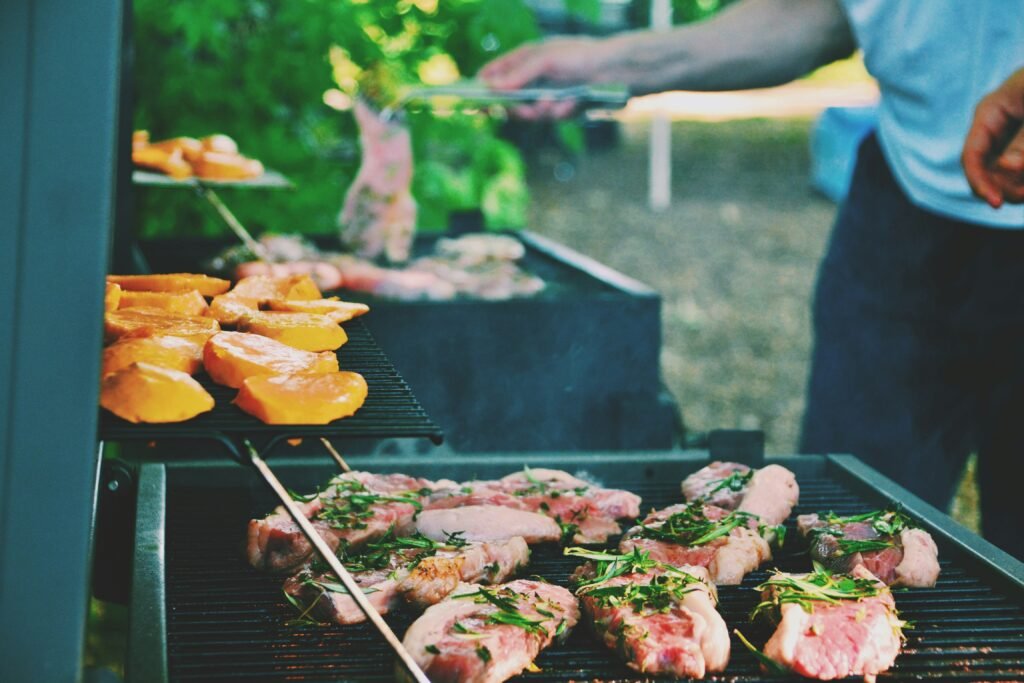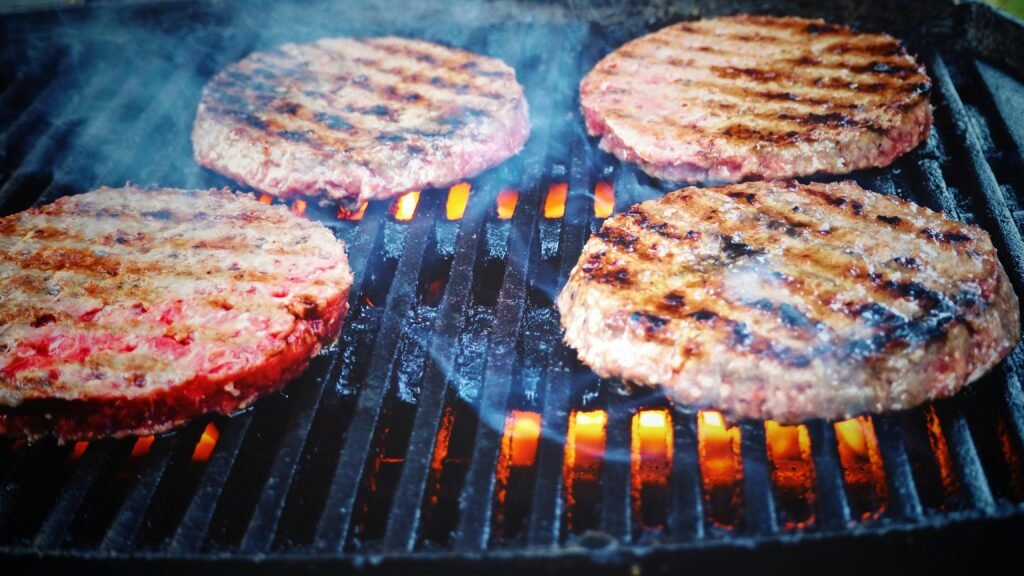Have you ever wondered what truly makes smoked foods so irresistibly delicious? The combination of rich, aromatic flavors and mouth-watering tenderness can be a culinary adventure like no other. Sometimes, we find ourselves pondering the alchemy that transforms simple ingredients into something spectacular. Together, let’s dive into the world of smoking techniques and recipes, where art meets science, sprinkled with a dash of experimentation. So, put on your apron, grab your tongs, and let’s get ready to create some smoked masterpieces that will leave your taste buds dancing!
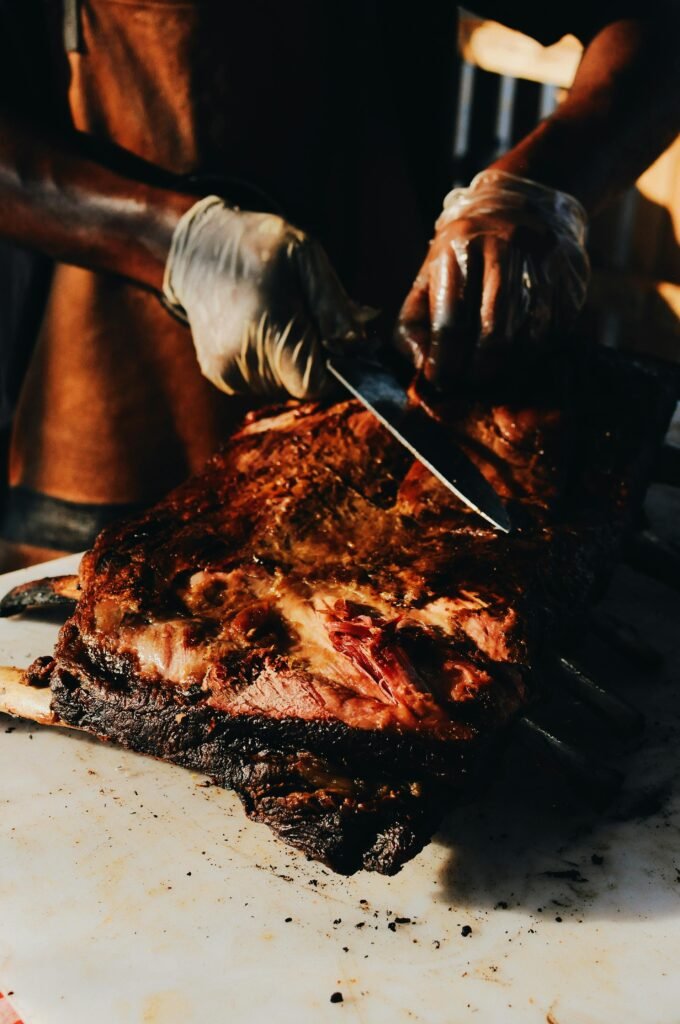
This image is property of images.pexels.com.
The Charm of Smoking: Unveiling the Mystique
Smoking isn’t just a method of cooking; it’s a ritual, a tradition, a moment where we become the alchemists of flavor. Over the centuries, this age-old technique has captivated our palates and imaginations. But why is smoked food so enchanting? It’s all about the sensory journey, where we combine the smoky aromatics with the texture of perfectly cooked meat or vegetables. Are you ready to unlock the secrets of this captivating process? Let’s light up those smokers and try our hand at something magical.
Choosing Your Weapon: Types of Smokers
Before we embark on this smoky voyage, we need to select our trusty sidekick—the smoker. Each type of smoker adds a unique twist to our culinary endeavors. It might seem like a lot to chew on, but once we break it down, it’s as easy as pie.
-
Charcoal Smokers: These are the classic rockstars of the smoking world. With their traditional flavor, they take us on a nostalgic trip back in time. The smoky flavor from charcoal brings a rustic delight to the food. However, they do require a bit of attention to maintain temperature and smoke levels—think of them as the diva that needs constant love and care.
-
Electric Smokers: For those of us who prefer convenience without sacrificing flavor, electric smokers are the way to go. They let us set our desired temperature and then work their magic without much intervention. It’s like having a trusty sous-chef that quietly and efficiently attends to the smoky details.
-
Pellet Smokers: These modern marvels use wood pellets and electricity to provide consistent heat and smoke. Talk about a blend of innovation and tradition! They’re user-friendly and allow us to experiment with different wood flavors, offering a symphony of tastes.
-
Gas Smokers: Powered by propane, these smokers provide a steady source of heat that’s easy to control. They’re perfect for those spontaneous gatherings when time is of the essence. Gas smokers let us be spontaneous smoke artists, crafting awe-inspiring dishes in a flash.
A Symphony of Flavors: Selecting Wood for Smoking
Wood! It’s not just another ingredient; it is the soul of our smoked delights. The type of wood we choose can elevate our masterpiece or throw a spanner in the works. Let’s break it down into bite-sized pieces.
-
Hickory: The granddaddy of smoke woods brings a strong, bacon-like flavor that pairs well with red meats and pork. It’s robust and bold, like a barbeque party where everyone gets along.
-
Applewood: This mellow choice infuses food with a sweet, fruity touch. It’s perfect for chicken, pork, and even veggies. Picture it like a sunset in a field of apple blossoms—gentle and utterly pleasant.
-
Mesquite: When we’re in the mood for a full-throttle smoke, mesquite delivers. It’s assertive and known for its earthy, intense taste. Let’s just say it doesn’t take a back seat when mingling with beef or wild game.
-
Cherry: With its reddish hue and sweet-smoky aroma, cherry wood harmonizes well with a variety of foods. It’s both delicate and flavorful, playing well with poultry and pork.
-
Maple: Like a lullaby for our taste buds, maple wood creates a subtle sweetness that works beautifully with cheese, poultry, and vegetables. Maple is that secret weapon that whispers, rather than shouts, its deliciousness into every bite.
The Essential Ingredients: Building a Flavor Base
Gathering ingredients for a smoking adventure is akin to collecting paints for a masterpiece. We’re artists eager to explore the realms of flavor. To craft a symphony in our smoker, we need the right notes—let’s examine a few key players:
-
Meats: Choose cuts that are well-suited for smoking, like brisket, ribs, and pork shoulder. Certain fishes, like salmon and trout, also lend themselves well to the smoky embrace, giving us a melty flake and subtle taste.
-
Vegetables: Don’t overlook the potential of smoking vegetables. Heartier vegetables like corn, peppers, and eggplant can withstand the heat and get a delicious, smoky char.
-
Herbs and Spices: Seasoning is our baton as we orchestrate our dish. Classic spices like paprika, cumin, garlic powder, and brown sugar create a well-rounded rub that complements the smoke.
-
Marinades and Brines: They infuse moisture and layers of flavor. Marinades work best for shorter smoke times, while brining is the unsung hero for tender and juicy meats over longer smokes.
The Smoking Process: Crafting Culinary Magic
Are we ready for liftoff? The anticipation builds as we prepare every detail and our smoker hums to life, offering bountiful opportunities. Here, patience is a virtue as we embark on a path that blends precision with creativity. Let’s walk through it together step-by-step.
Prepping the Protein: Getting Ready to Smoke
Before our chosen cuts of meat or vegetables get their smoke makeover, a little pampering is in order. It’s like a pre-smoke spa day!
-
Trimming: Remove the excess fat and any silver skin from the meat. We want the smoke to penetrate evenly, not just dance on the surface.
-
Rub-A-Dub: Generously apply a dry rub or seasoning blend over the meat. The rich bastion of flavors will help develop that coveted bark, the exterior crust of smoked meat that’s the envy of any BBQ enthusiast.
-
Brining: If we choose to brine, we’ll want to soak our meat in a solution of water, salt, sugar, and spices. Brining helps maintain moisture and infuses flavor deep into the meat. It’s like the VIP treatment.
Temperature Control: The Smoky Sweet Spot
Temperature is key to unlocking the secrets of successful smoking. Monitoring the heat isn’t just about precision; it’s about creating a perfect environment for the smoke to perform its wonders.
-
Low and Slow: Generally, aim for a steady temperature between 225°F to 250°F (107°C to 121°C). This temperature range allows the smoke and flavors to meld effortlessly with the meat over time.
-
Moisture Management: Place a pan of water in the smoker to help maintain a moist environment. This helps in producing a tender final product and prevents drying out. It’s akin to adding humidity to the room for that perfect opera performance.
-
The Thermometer’s Call: A good quality meat thermometer is our best ally. It’s not just about guessing; it’s about precision. Internal temperature tells us when our meat has reached flavorful nirvana.
Timing is Everything: When to Pull the Plug
Smoking is not just a method but a form of tactile meditation, one which asks of us to judge time by instinct and patience. Unlike a microwave dinner, there are no shortcuts, yet this makes the reward all the more flavorful.
-
Cooking Time: It varies according to cut and thickness, but remember the mantra: low and slow. Consider around 1-1.5 hours per pound for beef brisket, while fish will need a more delicate approach at around 30 to 60 minutes.
-
Resting Period: Let the meat rest for 15-30 minutes after removing it from the smoker—a chance for the juices to redistribute. It’s the equivalent of the standing ovation post-finale.
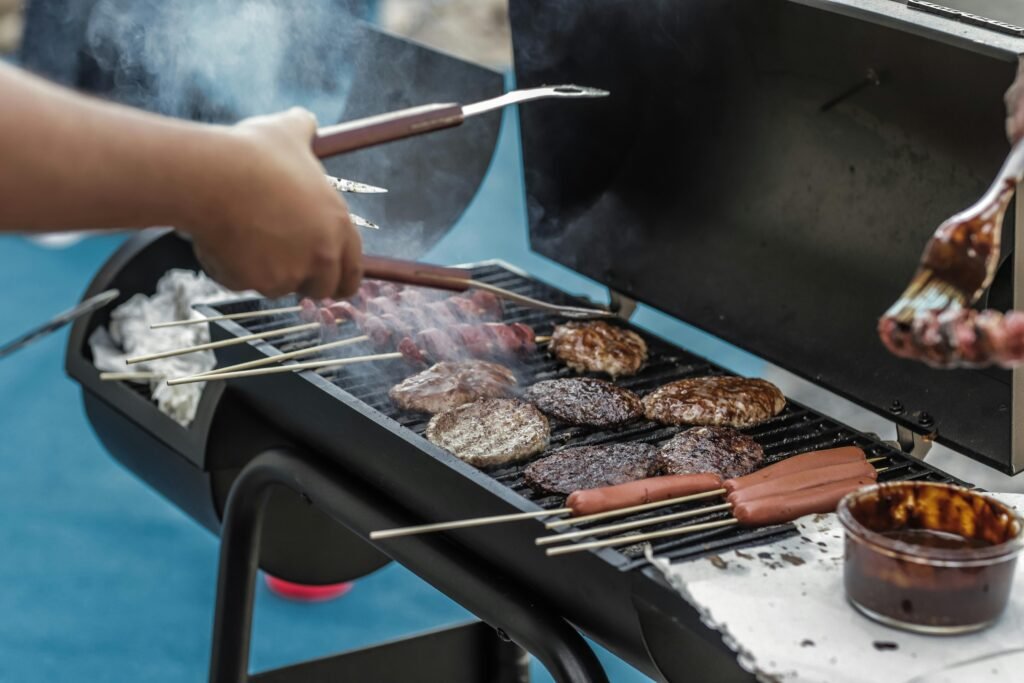
This image is property of images.pexels.com.
Fantastic Recipes: Unraveling Flavor Wonders
Now that we have covered the essentials, it’s time to roll up our sleeves and get cooking. These recipes are not just a guideline but an invitation to experiment and make them quintessentially ours.
Timeless Brisket: A Smoky Marvel
When done right, brisket is the pièce de résistance of smoked meats. It’s a journey worth the endeavor.
Ingredients
- 10-12 lbs of beef brisket
- 1 cup of coarse kosher salt
- 1 cup of cracked pepper
- 1/2 cup of paprika
- 1/2 cup of garlic powder
- 1/2 cup of brown sugar
- 1/4 cup of cumin
Instructions
-
Trim the brisket, leaving just enough fat to render down during cooking.
-
Rub the brisket with a blend of spices, ensuring it gets a generous and even coating.
-
Preheat the smoker to 225°F (107°C). Add hickory wood or your preferred choice.
-
Place the brisket fat-side-up in the smoker.
-
Smoke for approximately 12-15 hours. A good indication is when it reaches an internal temperature of 195°F (90°C).
-
Wrap the brisket in butcher paper halfway through if you fancy a softer crust.
-
Rest the brisket for 30 minutes before slicing and serving.
Savory Smoked Salmon: A Sea of Flavor
Fish can be something of an undiscovered treasure when it comes to smoking, and having a perfect smoked salmon is like orchestra playing at beach.
Ingredients
- 3 lbs of salmon fillet, skin-on
- 1/2 cup of brown sugar
- 1/4 cup of kosher salt
- 1 tbsp black pepper
- Zest of two lemons
- Fresh dill
Instructions
-
Combine brown sugar, salt, pepper, and lemon zest in a bowl.
-
Rub the mixture over the salmon thoroughly, ensuring coverage.
-
Wrap and refrigerate the salmon for 4-6 hours. Overnight works too, providing a stronger cure.
-
Preheat smoker using applewood chips to 150°F (65°C).
-
Smoke the salmon skin-side-down for about 2-3 hours or until it hits an internal temperature of 145°F (63°C).
-
Garnish with fresh dill before serving.
Smoky Joy: Charred Vegetables
Smoked vegetables are often the sleeper hit at the barbecue. Robust in flavor, they become that memorable tune on our playlist.
Ingredients
- Assorted vegetables (zucchini, bell peppers, eggplant, corn)
- Olive oil
- Salt and pepper
- Smoked paprika
- Fresh herbs (thyme or rosemary)
Instructions
-
Chop vegetables into uniform sizes for even cooking.
-
Season with olive oil, salt, pepper, and smoked paprika.
-
Preheat smoker using your choice wood chips, such as cherry, at 225°F (107°C).
-
Smoke vegetables for 45-60 minutes until tender and lightly charred.
-
Finish by garnishing with fresh herbs before serving.
Smoking Techniques: Pushing the Boundaries
Having scratched the surface of smoking, let’s talk techniques. Innovating with a hint of tradition mixed with curiosity brings about aha moments. And that’s where the fun begins.
Reverse Searing: Adding Flair to the Process
Reverse searing bridges precision with skill and creativity. Imagine starting with the smoke and finishing with the sizzle.
-
Preheat the smoker for indirect heating.
-
Smoke the cut to an internal temperature about 20°F (10°C) below preferred doneness.
-
Sear on a scorching hot grill or pan to form an irresistible crust.
Cold Smoking: Infuse Without the Heat
Unlock a world of possibilities with cold smoking, a method to impart smoke flavor without cooking. This is perfect for ingredients like cheese, nuts, or even butter.
-
Maintain a smoking temperature below 80°F (27°C).
-
Keep an eye on the light participants; it’s about flavor infusion without melt down.
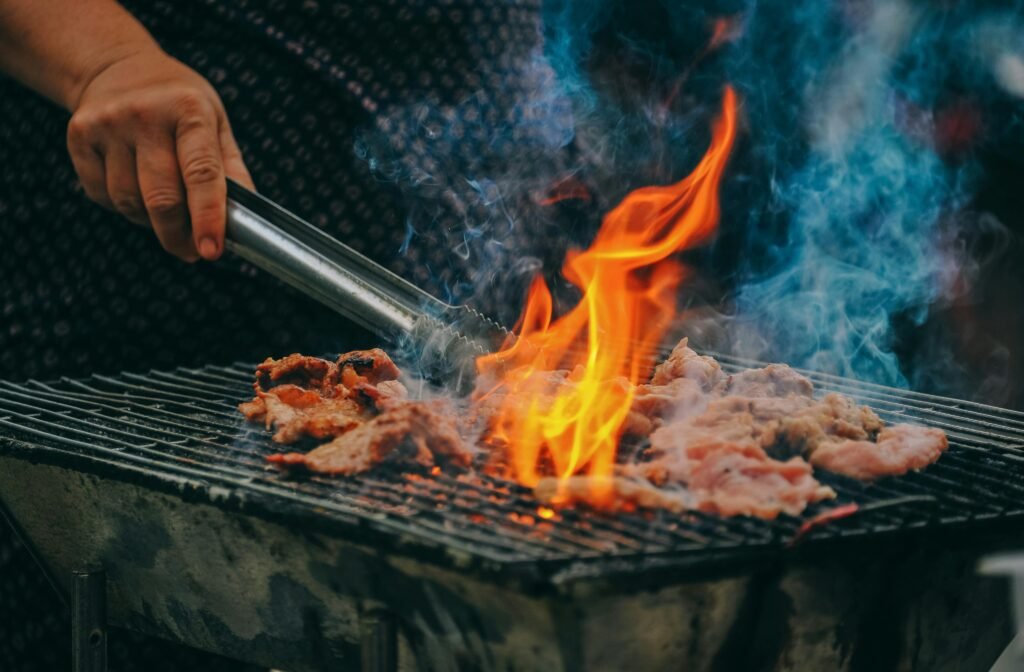
This image is property of images.pexels.com.
Join the Smoky Adventure: Reflections on a Culinary Tradition
As we find ourselves reflecting on our smoking journey, there’s something beautifully communal about it. Smoke pays homage to lunches with family, dinners with friends, and even solo experiments. The art of smoking goes beyond food—it’s about experiences and sharing moments.
Try new things, experiment without fear, and most importantly, savor every moment of the wondrous culinary endeavor. Let’s continue to explore, learn, and feast together in this smoky journey. After all, we are smoke artists in the making, one flavorful creation at a time.


